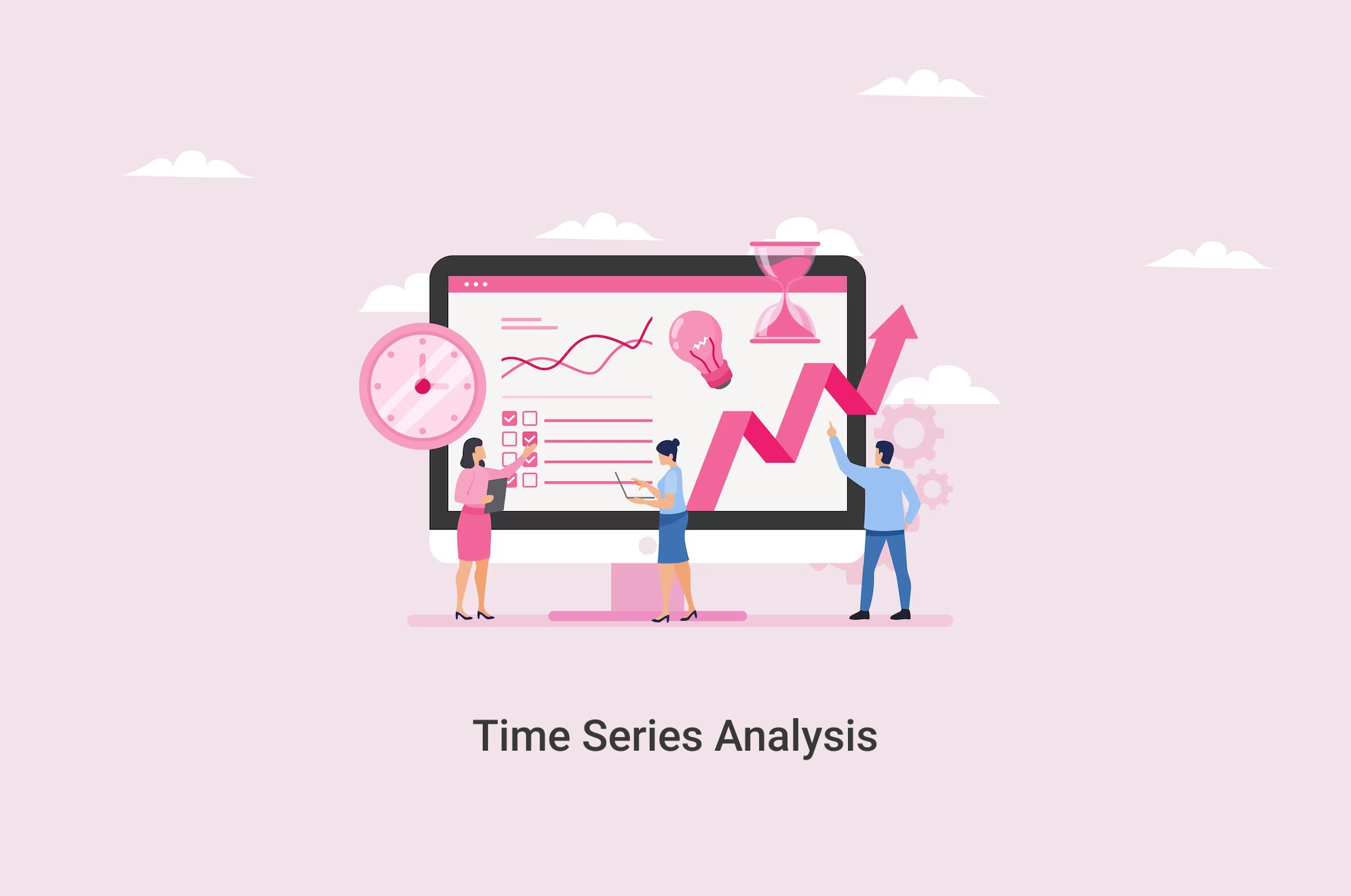Introduction to Time Series Analysis
Time series analysis is a statistical tool for analyzing data that changes with time. In domains like finance, economics, and engineering, time series analysis is used to examine a phenomenon's behavior through time and anticipate future values. It involves looking at the trends and patterns in data points that are collected over time at regular intervals.
Time series analysis is mostly used to find patterns such as trend, seasonality and cyclical patterns in the data. For finding these patterns within the data, a number of approaches including data visualization, statistical modeling, and machine learning algorithms are used. These patterns then can be used to create forecasts and predictions which are efficient for organizing and making choices.
Overall time series analysis is an effective method for understanding behaviors across time and forecasting future values. It is a useful tool for many fields that deal with data that changes over time because of its many applications.
Importance of Time Series Analysis in E-Commerce
Time series analysis is important in e-commerce because it allows businesses to gain insights into how their operations and customers are behaving over time. By analyzing data collected at regular intervals, time series analysis can help e-commerce businesses to identify trends and patterns that are not immediately visible through other methods. This can inform decision-making in a range of areas, such as inventory management, pricing strategies, website design, and advertising campaigns.
One of the primary benefits of time series analysis in e-commerce is that it allows businesses to make data-driven decisions. Decisions regarding the creation of new products, marketing initiatives, and investment plans can be informed by this. This can help businesses to stay competitive and adapt to changing market conditions.
All things considered, time series analysis is a crucial tool for e-commerce companies trying to make wise decisions and improve their performance. Businesses can get important insights that can guide decision-making and keep them one step ahead of the competition by studying data over time.
Applications of Time Series Analysis in E-Commerce
Time series analysis has several applications in e-commerce. Here are some examples:
- Sales forecasting
Time series analysis can be used to estimate sales for various products, pinpoint seasonal patterns, and improve pricing and inventory management plans. In order to prevent stockouts or overstocking, this can help organizations organize their operations and marketing initiatives successfully. - Customer behavior analysis
To find patterns and trends in user activity, time series analysis can be used to examine consumer behavior data, such as clickstream data or shopping cart data. This can assist companies in improving the user experience and design of their websites, which can enhance revenue and continue to attract customers. - Performance optimization
Time series analysis can be used to pinpoint website performance problems like slow page loads or high bounce rates as well as peak traffic periods. Businesses can utilize this information to enhance user experience and website performance, which can increase revenue and customer happiness. - Ad optimization
To evaluate click-through rate (CTR) data and find trends and seasonality in user behavior, time series analysis can be employed. Businesses can use this information to refine their advertising tactics and increase the return on their advertising spend (ROI). - Fraud detection
Time series analysis can be used to spot irregularities in transaction data and raise the red flag for possible fraud. Businesses can use this to safeguard both themselves and their clients against monetary loss and reputational damage.
For e-commerce companies trying to make data-driven decisions and improve their performance, time series analysis is a flexible tool. Businesses can get important insights about, among other things, consumer behavior, sales patterns, and website performance by examining data over time.
Conclusion
Time series analysis is a valuable tool for understanding trends and patterns in e-commerce data. By analyzing historical sales data and identifying trends and seasonality, businesses can make informed decisions about inventory management, pricing strategies, and marketing campaigns.
Technical analysis techniques such as moving averages, exponential smoothing, and ARIMA models can be used to forecast future sales and identify potential anomalies or outliers in the data.
Time series analysis should be used along with other analytical methods and business acumen. The data must also be trustworthy, accurate, and devoid of bias, and the proper statistical procedures must be used to account for any non-stationarity or autocorrelation in the data. Generally speaking, time series analysis may provide analytical information on e-commerce success and assist in strategic decision-making.




